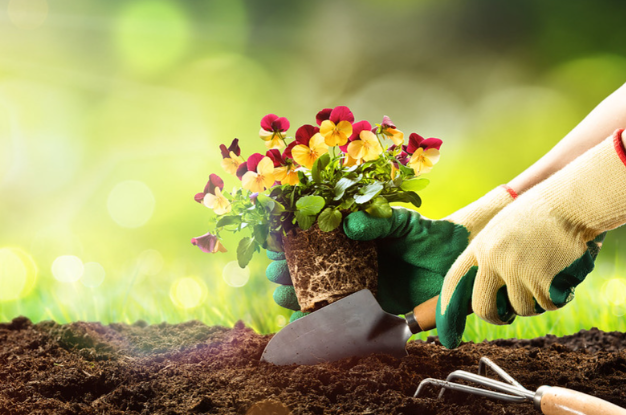
By Trisha Gedon
Growing vegetables sounds like fun, and who doesn’t like pretty flowers in the landscape – but where does a beginning gardener start to cultivate a green thumb?
David Hillock, Oklahoma State University Extension consumer horticulturist, said there are things novice gardeners need to keep in mind before turning over the first shovelful of soil or filling the first pot.
“Location is a key part of successful gardening. Most plants need at least six hours of continuous sunlight to perform at their best,” Hillock said. “Good soil is also a must. Have a soil test done to see what nutrients may need to be added to the soil.”
Natural light isn’t the only thing to consider when picking a location. Make sure the garden spot is close to an irrigation source because dragging a hose all over the yard quickly becomes tiresome. Also, keep the garden location close to the house.
“The easier the access, the more likely you’ll be to take care of gardening chores, such as watering and pulling weeds,” he said.
Hillock cautions new gardeners to take a reasonable approach.
“It’s a good idea to start small in the beginning,” he said. “It’s perfectly fine to start with just a container or two of herbs or a small bed with a zucchini mound and a tomato plant. It can be easy to get overwhelmed with too big of a space in the beginning. Only grow things your family will eat.”
Casey Hentges, host of OSU Agriculture’s “Oklahoma Gardening” television show, offers tips on five easy vegetables for beginning gardeners to grow or the top five herbs.
Laura Payne, OSU Extension horticulture specialist in Payne County, cautions new gardeners about spending a lot of money on tools and other supplies in their inaugural year of gardening.
“Anytime I start something new, I always feel like I need to have all the tools now,” Payne said. “Don’t invest a lot of money on pots, tools and gadgets right away. Start with just a few basic tools and go from there. Consider starting with a trowel, a small pair of loppers or shears and a pair of gardening gloves. Gardeners may even be able to upcycle some things from around the house. Spend some time and determine if gardening is a hobby you’re going to enjoy. If so, then invest in more equipment.”
It’s important for gardeners to know what USDA Plant Hardiness Zone they live in. Growing zones/planting zones help gardeners determine what flowers, plants or vegetables grow in a specific region. Oklahoma growing zones range from 6a in the northwest part of the state to 8a in the southeast corner.
“When going to the local nursery or garden store, check the plant tags to ensure your choices are designed to grow well in your area,” Hillock said. “The tags also provide vital information on proper planting techniques, along with light and irrigation requirements.”
Gardening is one of the most popular leisure activities, and following these tips will help beginning gardeners get started without being overwhelmed.
OSU Extension recently developed a comprehensive Plant ID website to help both new and seasoned gardeners identify and learn more about hundreds of plants. Plants are listed by their common names in an A-Z format. OSU Extension offers additional gardening information.
OSU Extension uses research-based information to help all Oklahomans solve local issues and concerns, promote leadership and manage resources wisely throughout the state’s 77 counties. Most information is available at little to no cost.


















